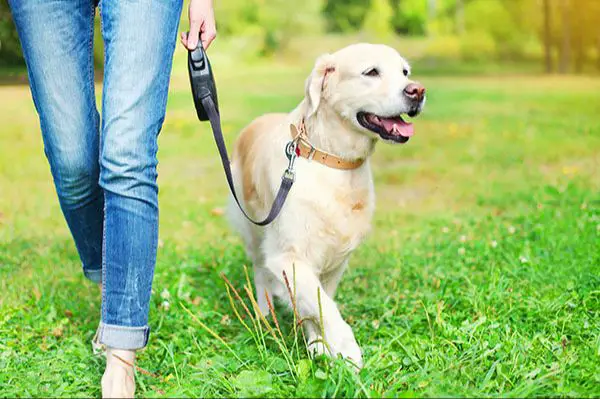Introduction
Dog owners may be unaware that they can face legal liability if their pet frightens or intimidates someone. Most are familiar with dog bite statutes that hold owners responsible for bite injuries. However, many jurisdictions also impose liability when a dog’s barking, chasing, jumping, or other actions cause harm. Victims may be legally entitled to compensation for medical bills, lost wages, pain and suffering, and other damages.
The details depend on the laws in each state and municipality. But negligence laws, dog bite statutes, and animal control regulations often make owners responsible for controlling their dogs. Failing to restrain an overly excitable or aggressive dog can lead to lawsuits and payouts of thousands of dollars or more.

This article provides an overview of owners’ potential legal vulnerability when their dog scares someone. It examines what constitutes negligence or unacceptable behavior. The article also offers tips to minimize liability risks.
When Is an Owner Legally Liable?
In most states, dog owners may be held liable if their dog bites or attacks someone. Liability is determined by the legal principle of negligence and the state’s dog bite statute.
To hold the owner liable, the injury victim must prove:
- The owner owed them a duty of care
- The owner breached this duty through negligence
- The breach caused the victim’s injuries
- The victim suffered damages
Most states have “strict liability” dog bite statutes that make owners responsible regardless of negligence if their dog bites someone. However, the victim’s own negligence may reduce the owner’s liability.
Overall, owners may be liable if they fail to properly restrain their dog, knowing it could bite. But if the bite was unforeseeable, the owner may avoid liability.
What Constitutes a ‘Dog Bite’?
A dog bite refers specifically to an injury caused by a dog’s teeth. For an incident to legally qualify as a dog bite, the dog must clamp its jaws down and pierce the skin. Other types of injuries caused by dogs may not meet the definition of a bite. For example, if a dog knocks someone down, scratches them, or causes an injury in some other manner without biting, it would not constitute a dog bite.
Dog bites can range in severity from minor punctures to profound wounds involving muscle, bone, blood vessels or nerves. The majority of dog bites are to the extremities like the arms or legs. More severe dog bites may affect the head, face or neck and can potentially be disfiguring or even deadly.
It’s important to note that even if a dog does not bite, their owner may still be liable for any injuries or harm caused by the dog’s actions. However, dog bite laws specifically pertain to liability and damages resulting from a dog puncturing skin with its teeth.
Other Types of Dog-Related Injuries
In addition to bites, dog owners may be liable for other injuries caused by their pets. This includes knocking someone over, chasing, or aggressive barking that leads to harm.

For example, if a dog runs and jumps on someone, causing them to fall and break a hip, the owner may be responsible for damages. Even if the dog’s behavior seemed harmless or playful, its size and strength could lead to unintentional injuries.
Similarly, dogs chasing or scaring someone could lead to trips, falls, or mental distress. If a loose dog intimidates someone into running away and they get injured in the process, the dog owner may bear responsibility. Fast movement, loud barking, baring teeth, or other threatening actions could reasonably frighten people, especially children.
However, the injured person typically needs to show the dog behaved in an abnormal or dangerous manner beyond normal dog behavior. For instance, injuries from a dog stealing food off a picnic blanket would likely not warrant legal liability. But a dog aggressively barking, snarling, or chasing someone without reason could demonstrate negligence on the owner’s part.
Overall, while bites often have clearer liability, other injuries caused by avoidable threatening or reckless dog behavior may also be grounds for legal action. Dog owners need to keep their pets under control to prevent harm to others.
What Makes a Dog Dangerous or Vicious?
There are several factors that can contribute to whether a dog is considered dangerous or vicious in the eyes of the law:
Breed – Certain breeds such as pit bulls, Rottweilers, and German shepherds are often perceived as more aggressive and dangerous. However, breed alone does not determine a dog’s temperament.
Size – Larger, stronger dogs can potentially cause more damage if they do bite or attack. However, small dogs can be aggressive too.
Training – Dogs that are poorly socialized, abused, or specifically trained to be aggressive are more likely to exhibit dangerous behaviors.
Behavior – Warning signs like baring teeth, growling, snapping, or lunging may indicate a dog is prone to biting. A history of aggression or unprovoked attacks is a major red flag.
Rather than judging a dog by its appearance, owners should be vigilant about training and socializing their pets from a young age to minimize the risk of them harming others.
When Is an Owner Negligent?
For an owner to be considered negligent, the victim must prove the owner failed to exercise reasonable care. There are several ways an owner can demonstrate negligence and increase their liability risk, including:
Failure to Restrain
Letting a dog roam free and uncontrolled, especially in public areas like sidewalks or parks, shows negligence on the owner’s part. Even if the dog has never shown aggression, owners must keep control via a leash, fence, or other method of restraint.
Improper Training
Owners have a responsibility to properly train their dogs, socialize them to new people/environments, and teach basic obedience commands. Untrained dogs are more likely to startle and bite, so insufficient training can count as negligence.
Ignoring Warning Signs
If a dog has exhibited aggressive behavior before, such as lunging, growling, or nipping, the owner should take corrective measures. Continuing to allow a potentially dangerous dog unrestrained contact with people shows negligence.
What Damages Can a Plaintiff Seek?
If a dog attack results in a personal injury claim or lawsuit, the plaintiff can potentially seek compensation for a variety of losses or damages. Some of the main types of damages that may be awarded include:
Medical bills – This includes expenses related to emergency treatment, doctor visits, hospitalization, surgery, medications, physical therapy or rehabilitation, and any other costs associated with medical treatment due to the dog bite injuries. Plaintiffs can claim both past and future estimated medical expenses.

Pain and suffering – Damages can be awarded to compensate for physical pain and discomfort as a result of dog bite injuries. Awards may also be given for emotional distress, trauma, fear, anxiety, disfigurement, disability, loss of enjoyment of life, and other forms of suffering caused by the incident.
Lost wages – Plaintiffs may be reimbursed for past income they lost due to being unable to work while recovering from dog bite injuries. Awards can also account for future loss of earning capacity if the injuries result in permanent disability or impairment that reduces the plaintiff’s ability to work.
How Much Is the Average Settlement?
Statistics show that the average settlement for a dog bite lawsuit is around $44,760. However, the amount can vary widely based on the severity of the injuries, medical bills incurred, lost wages, and other damages. Settlements for severe dog attacks often reach 6 or even 7 figures. According to one major insurance company, the average cost paid out for dog bite claims was $33,230 in 2017. Another study found that the average cost per claim nationally was about $39,500. However, it’s important to keep in mind that every case has unique circumstances.
Some factors that can increase the potential value of a dog bite case include:
- Extensive injuries requiring medical treatment and rehabilitation
- Permanent scarring or disfigurement
- Long-term or permanent disability resulting from the bite
- High medical bills and out-of-pocket expenses
- Lost income due to being unable to work
- Young age of the victim
- Viciousness of the attack
- Past complaints or attacks by the same dog
- Strict liability statutes in the state making owner liability easier to prove
An experienced dog bite attorney can review the details of your case and provide insight into what type of compensation amount you may realistically seek if you decide to file a lawsuit.
Tips for Dog Owners
As a dog owner, there are steps you can take to reduce the risk of your dog harming someone and you being liable. Some tips include:
Restrain Your Dog. When your dog is outside, keep it securely leashed. Even if your yard is fenced, supervise and accompany your dog. Don’t let your dog wander or escape.
Train Your Dog. Invest time in obedience training for your dog, especially if it is a large or powerful breed. Teach and reinforce commands that keep your dog under control. Also socialize your dog at a young age to prevent aggressive tendencies.
Get Liability Insurance. Consider a dog liability insurance policy that covers injuries or damage caused by your dog. This provides a layer of financial protection if you are sued.

Following these tips helps minimize opportunities for your dog to frighten, threaten, or injure someone. A well-trained, restrained dog is at little risk for incidents leading to lawsuits. Liability insurance adds peace of mind as well.
Conclusion
In summary, dog owners can be held liable if their dog bites or otherwise injures someone, but several factors come into play. The main considerations are whether the dog has shown dangerous tendencies in the past, whether the owner was negligent in controlling or restraining the dog, and the extent and severity of the victim’s injuries. Key takeaways for dog owners include:
– Make sure your dog is properly trained and socialized to minimize aggressive behavior.
– Always keep your dog leashed or contained when in public areas.
– Post “Beware of Dog” signs if your dog has shown aggression.
– Obtain homeowner’s insurance that covers dog bites.
– Be prepared to compensate victims for medical bills, lost wages, pain and suffering if your dog does cause injury.
While owners are not automatically liable for every injury, following precautions and acting responsibly can reduce liability risks. Consulting a knowledgeable dog trainer or attorney can also help dog owners understand their responsibilities.